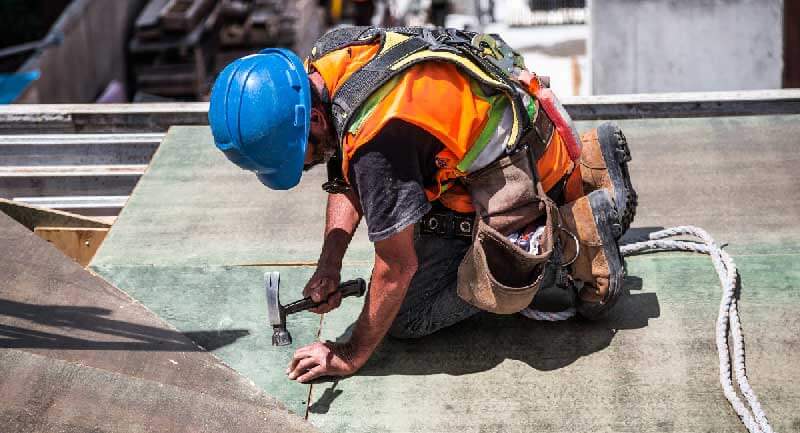COVID-19: What it means for engineering and construction
It’s been a year since the COVID-19 pandemic forced much of the world into lockdown. While the economy hasn’t fully recovered, the construction industry has benefitted from its status as an “essential” business, meaning it has been able to carry on while others have been forced to shut down. Uncertainty surrounding the duration and severity of this crisis make it hard to anticipate how a recovery could unfold for the industry.
Some construction projects have been delayed, and some canceled, as a result of the impacts of COVID-19 on the companies and governments that commissioned them. Further, possible supply chain bottlenecks of equipment and materials — including structural steel and glass from Asia — could cause project delays in currently funded projects, or reduced spending on future ones.
Still, the construction industry has had to face many virus-related challenges, particularly when it comes to workers on jobsites. Even though the industry adapted quickly at the onset of the pandemic to make jobsites safe, that hasn’t stopped the virus from being a major problem for many construction workers.
Contractors should aim to prevent COVID-19 on jobsites by continuing to mitigate the risks with mask wearing and physical distancing as much as possible, while ensuring that workers are routinely tested. Some jobsites do conduct temperature checks of employees as they arrive for a shift.
Practical steps for responding to the coronavirus crisis
The most immediate impacts are being felt at the subcontractor middle market of the industry. Subcontractors may be especially vulnerable to bankruptcy, which could occur after a site shutdown of only weeks.
Government stimulus actions could throw a lifeline to this segment — via a package of tax benefits or direct cash disbursals — potentially making situations more tenable for subcontractors. But the timing is critical. A stimulus package could also prevent an upward ripple effect on the major E&C players’ ability to secure construction labor in the short term.
Considerations for engineering and construction companies
Possible issues
The industry should continue to prepare for potential struggles in the subcontractor middle market of the industry, especially as construction site shutdowns begin to occur on a large scale and remain in place for a prolonged period. Such a scenario would likely also open the door to a potential rise in acquisitions of distressed firms.
The industry’s workforce may be vulnerable given that most of the work must take place on-site and cannot be done remotely. Additionally, companies may need to find ways to impose social distancing through smaller crews and longer, staggered shifts.

Steps to consider
- Work closely with subcontractors (and governments) and consider emergency measures to assist them in the case of widespread construction site shutdowns.
- Assess how profitability, loans, revolving credit and cash flow reserves can support ongoing operations in a low-revenue environment — in light of current (and forecasted) cash operating expenses, taxes and other cash expense items.
- Work closely with municipal, state and federal governments to coordinate plans for worker and consumer safety, while keeping mission-critical projects running.
- To help assess labor costs, consider workforce contingency planning scenarios, including during a period of diminished demand and activity.
Contractors consider COVID-19 vaccine incentives for hesitant workers
Vaccine availability for construction workers varies depending on state prioritization lists, and there’s currently not enough vaccine available to meet demands nationally. Earlier this month, President Joe Biden announced that there will be enough vaccine supply for all U.S. adults by the end of May.
Construction workers are among the least likely of essential workers to get the COVID-19 vaccination, according to a recent study. This means construction employers might have their work cut for them if they plan on either mandating or trying to persuade employees to get the shot.
Not many construction firms are considering making vaccination a requirement, with the exception of those contractors that work in the healthcare industry, said Brian Turmail, vice president of public affairs and strategic initiatives for the Associated General Contractors of America.
“In most instances, it’s an owner mandate,” he said. “Even in those cases, contractors still have to deal with reasonable accommodation requests for those employees that find a reason to resist.”
The only accommodation, he said, would be to move them to another project if available.
Sources: blog.bluebeam.com; constructiondive.com; pwc.com

